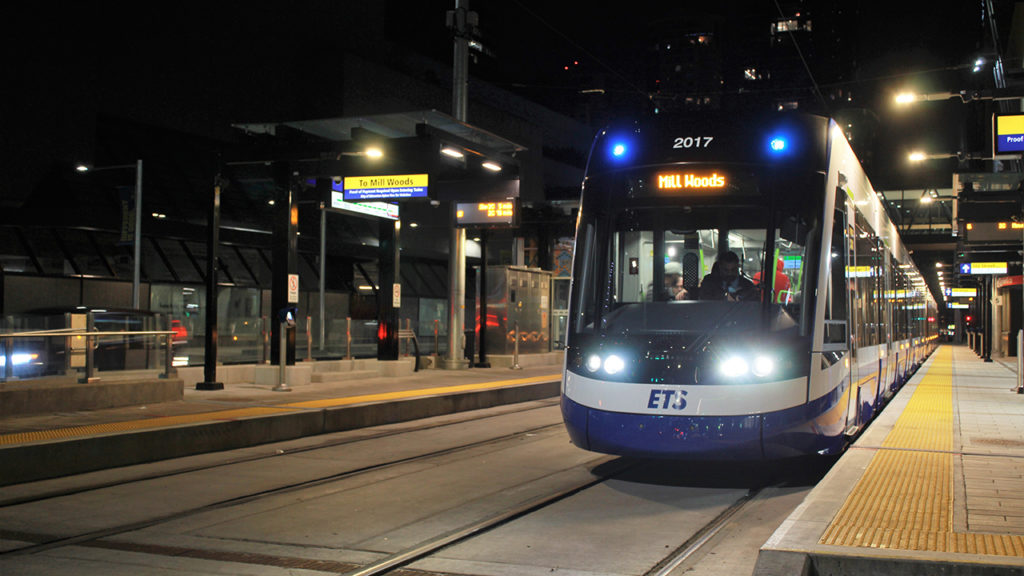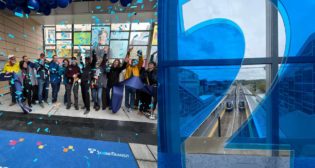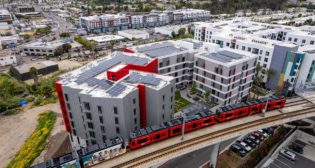
Edmonton Valley Line Southeast Opens
Written by John Thompson, Canadian Contributing Editor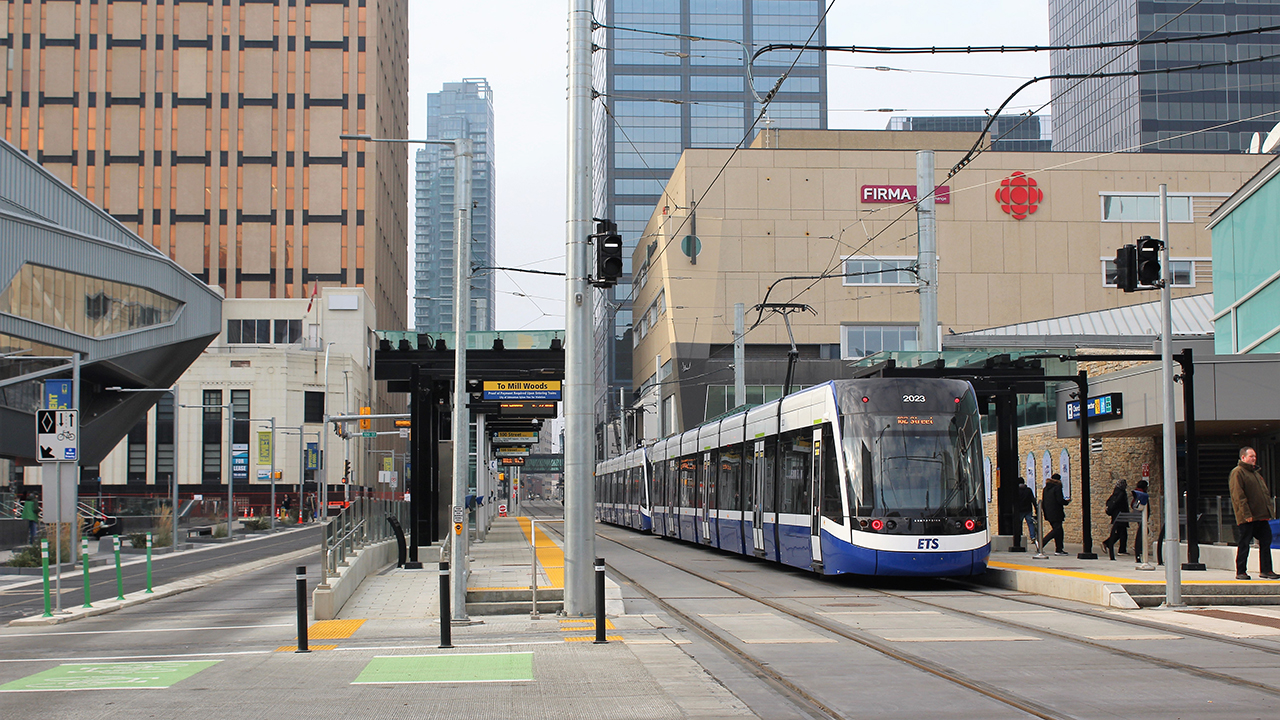
Michael Roschlau photo
Edmonton, the provincial capital of Alberta, finally welcomed its first passengers on the much-delayed Phase One of the Valley LRT project, on Saturday, Nov. 4.

The eight-mile Valley Line Southeast is notable for two reasons: It operates Canada’s longest LRVs, and is Edmonton’s first low-floor LRT operation. As such, it is physically separate from the existing high-floor LRT lines. There is no track connection between the two operations.
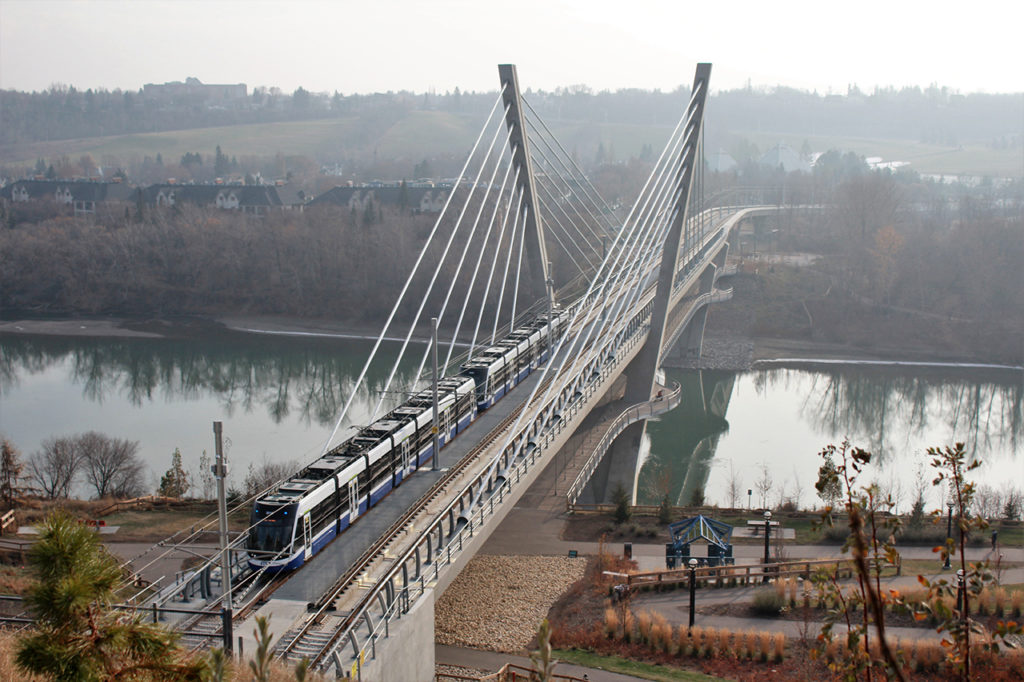
Opening of the Valley Line was three years behind schedule. The project was delayed by the COVID pandemic, frequent torrential rainstorms, removal of a huge automobile-sized piece of concrete where a bridge pier for the high-level Tawatinâ bridge had to be situated, hairline cracks in concrete supporting piers on the elevated section, and defective signal cables.
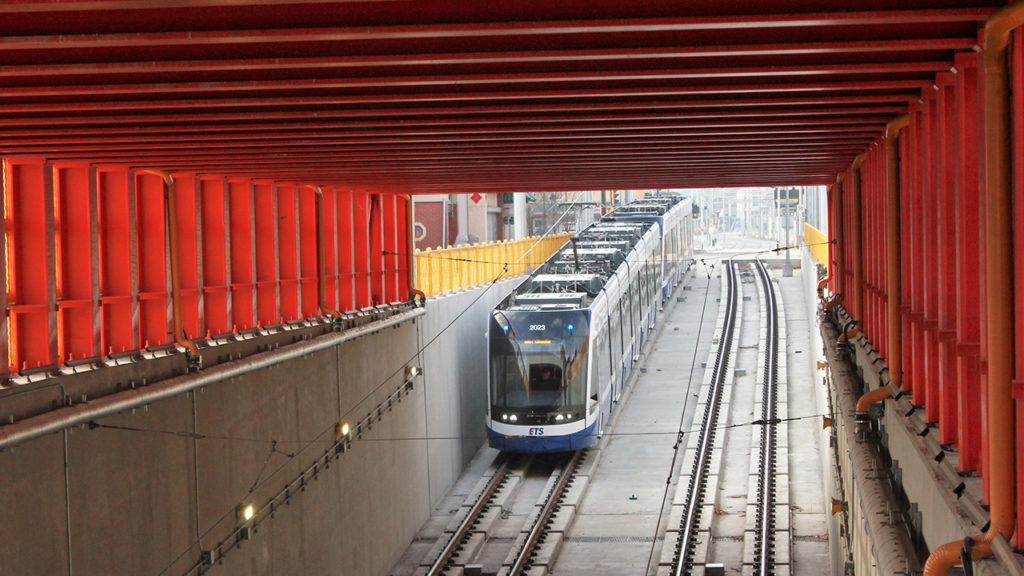
“Due to a number of factors throughout the construction and testing periods, there were delays ensuring the long-term safety and reliability of the system,” Edmonton Transit System explained. “Before the line could open for passenger service, TransEd Partners, the consortium responsible for design, build, vehicles, operation and maintenance, needed to receive a certificate from the Independent Certifier. This certificate indicates the infrastructure is complete and meets the requirements in the project agreement. Once this milestone was achieved, the City and TransEd Partners were able to open the line for safe and reliable service.”
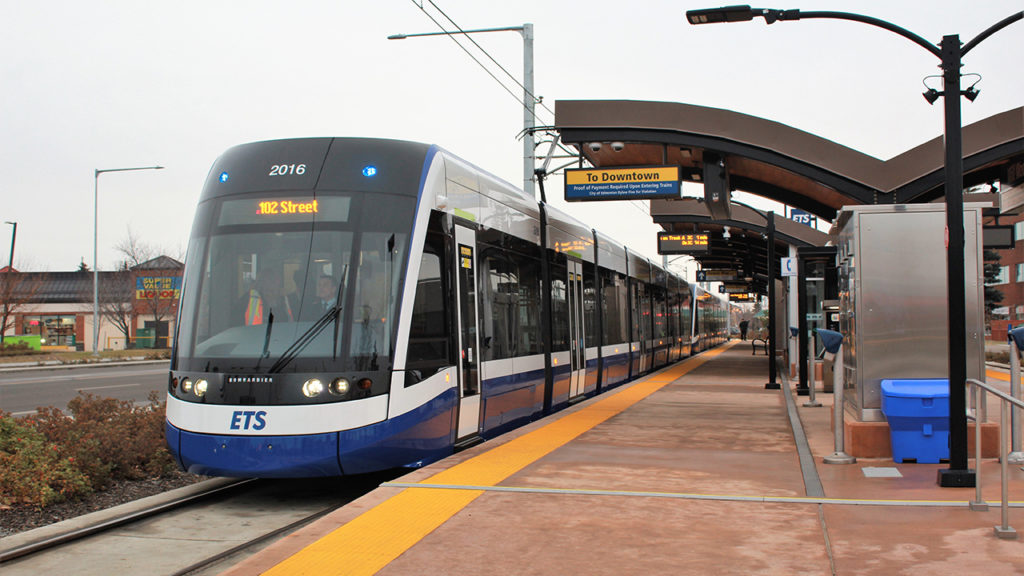
The Valley Line, costing an estimated C$1.8 billion and delivered on-budget, is a public-private (P3) DBVFOM (Design-Build-Vehicle-Finance-Operate-Maintain) partnership between the City of Edmonton and TransEd Partners. Consortium members include engineering and construction firm Bechtel, construction company EllisDon, Fengate Capital Management and Alstom, the LRV supplier. TransEd Partners designed and built the line and will operate and maintain it until 2050. Funding was provided by the City, Provincial and Federal governments:
- Government of Canada: C$400 million.
- Government of Alberta: C$600 million.
- City of Edmonton: C$800 million.
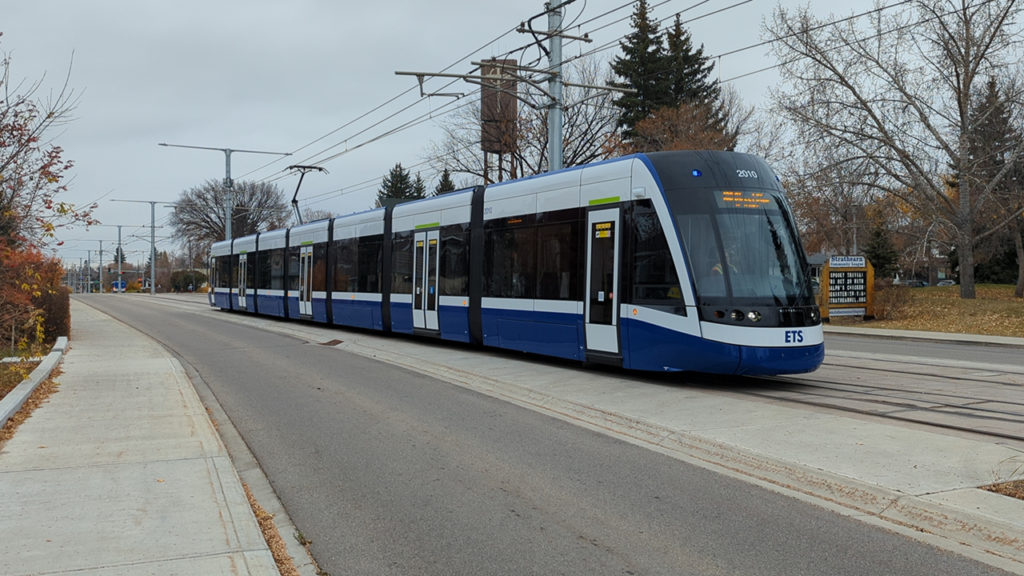
The Valley Line Southeast project agreement required TransEd to determine the size of the LRV fleet required to provide capacity for 6,500 passengers per direction per hour.
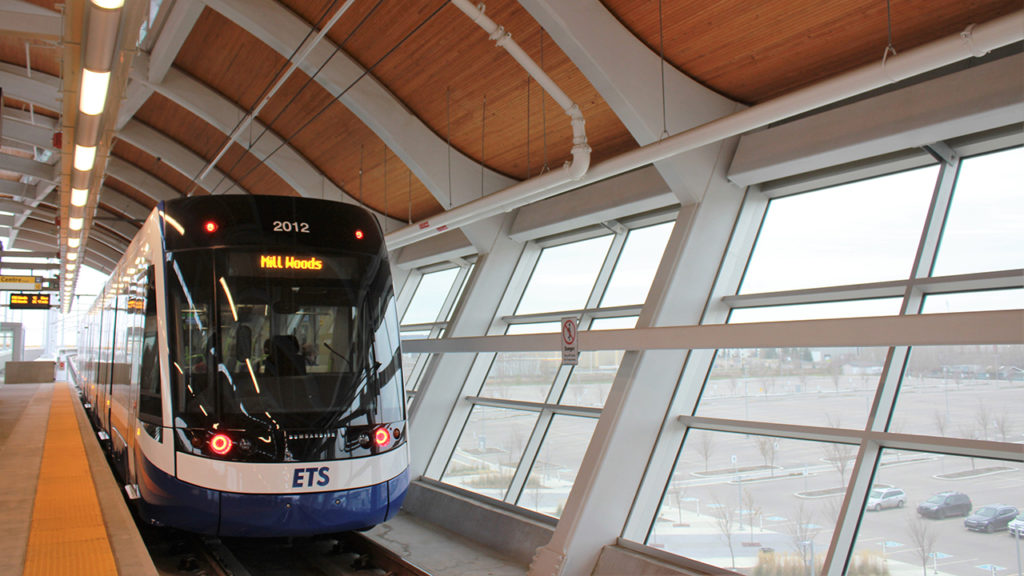
The Valley Line begins in the concrete and glass canyons of downtown Edmonton at 102 Street Station, located at the intersection of 102 Street and 102 Avenue (in Edmonton, Avenues run east-west and Streets run north-south)—actually running in the middle of 102 Avenue. It enters a short tunnel, then crosses the deep North Saskatchewan River Valley on a new high-level bridge. From here the line takes basically a street-level route to the Mill Woods terminal. The tracks are laid mainly in a center or side of the road private-right-of-way, in or on concrete. There is a short bridge over a highway, a lengthy elevated section above an expressway, and a railway line. There are 12 stations, one of which is elevated: Davies Station, with a parking lot that accommodates 1,300 cars.
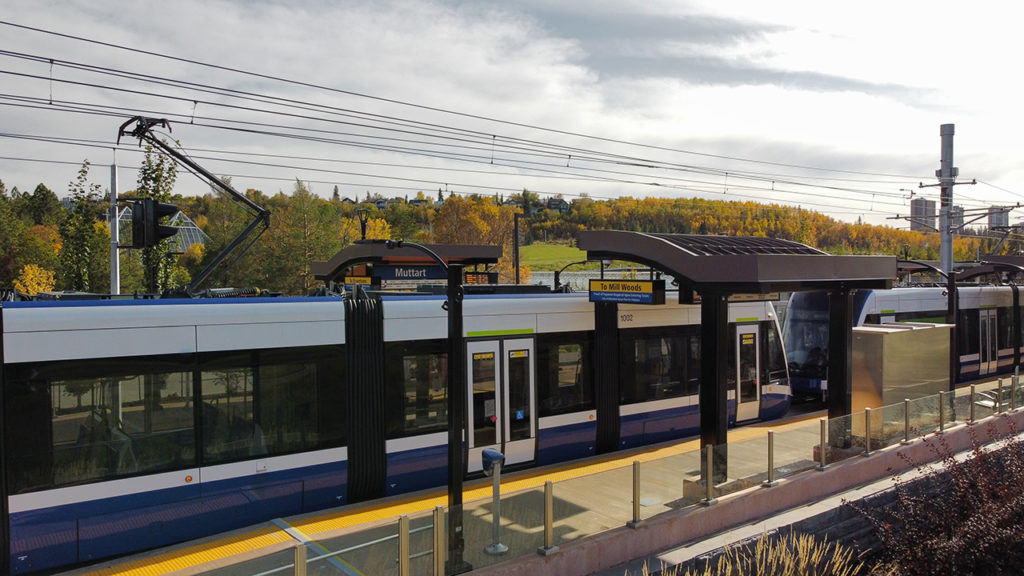
Service is provided by 26 Alstom seven-section Flexity LRVs built in Kingston, Ontario. They are 137 feet long, with 82 seats, and can accommodate 275 passengers. Servicing is at the new Gerry Wright maintenance center, near the line’s midway point.
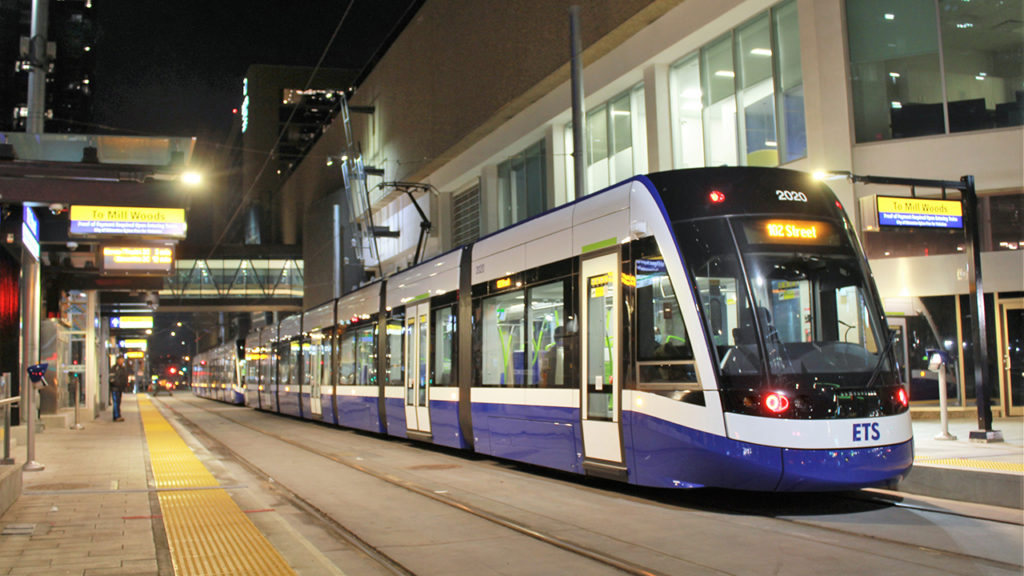
The main reasons for Edmonton’s choice of low-floor technology is essentially economic; construction costs are significantly lower. Low-floor is also being publicized locally as being more accessible for passengers. The transfer point between the two modes is Churchill Station on the underground Capitol and Metro high-floor lines, which Edmonton opened as the first new North American LRT in 1978. Access is provided by escalators and elevators. Existing fares and transfers with city buses are accepted on the new line.
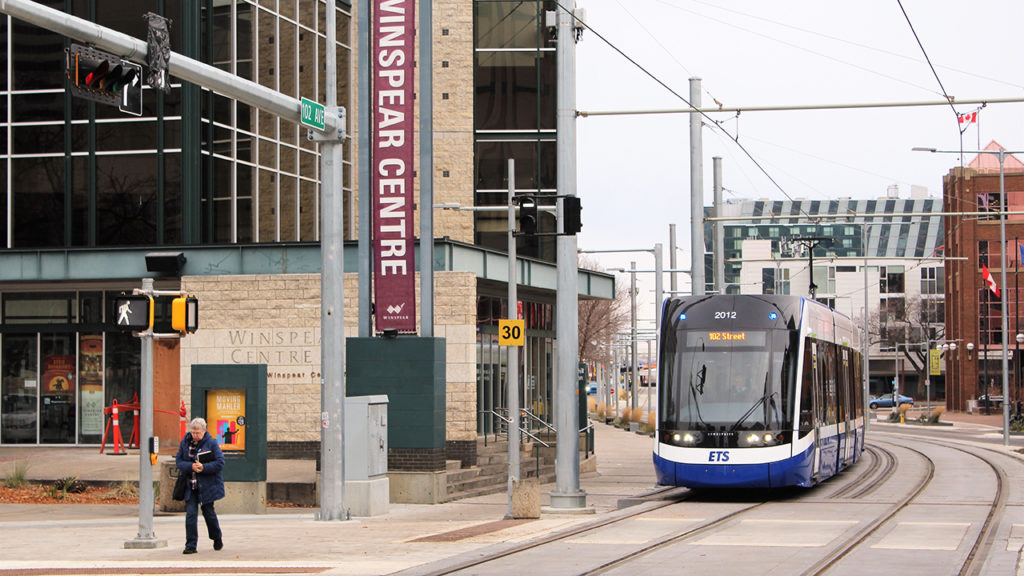
Service operates seven days per week from 5:15 AM to 1:00 AM. Weekday service operates on 10-minute headways until 9:30 PM, then with 15-minute headways until service ends. Saturday service operates on 10-minute headways until 6:30 PM, then on 15-minute headways. Sunday service features 15-minute headways all day.
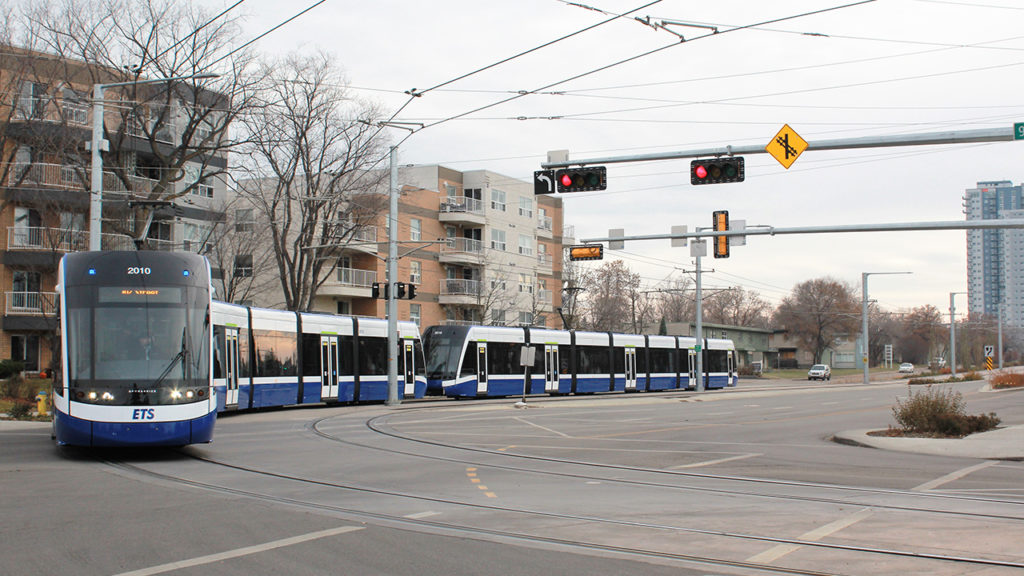
Apart from the downtown terminal, the territory served by the Valley Line is chiefly low-density residential and commercial; a hospital and an educational institution are likely traffic generators. However, as elsewhere, it is expected that the LRT’s presence will stimulate significantly higher-density development. The Valley Line, in a nutshell, links the downtown core with the city’s southeast section.
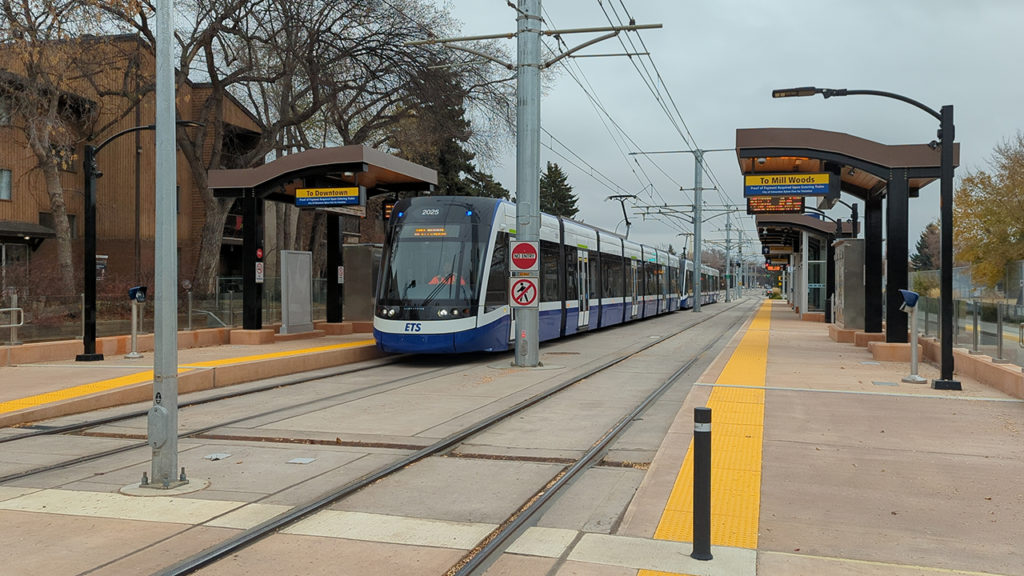
There are three primary track structures used for Valley Line Southeast:
- Tie and ballast, mostly used in the maintenance facility yard.
- Direct fixation, commonly used in rail systems.
- Embedded track: The rail is set in a trough cast into the concrete slab, which is filled with an elastomeric grout. As this is an urban-style LRT running beside roadways, the majority of the at-grade track is embedded. There is also a short section of “Resilient Track,” which is essentially an embedded track where the concrete slab is suspended on springs. This section is adjacent to a concert hall that had very strict requirements for vibration control.
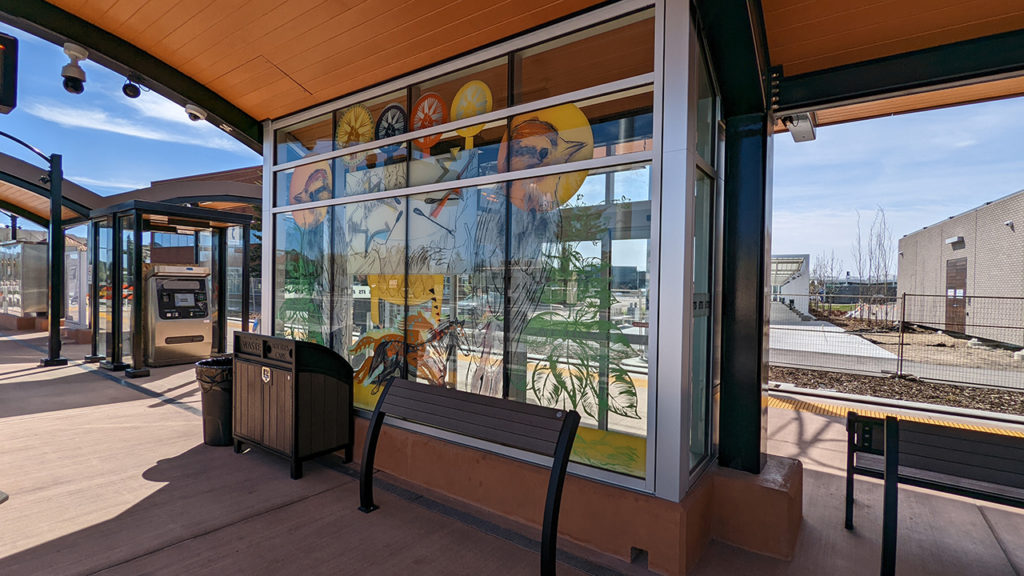
Overhead infrastructure for Valley Line Southeast includes:
- Tawatinâ Bridge,crossing the North Saskatchewan River. The main deck of the extradosed bridge carries the LRT, while the lower deck is a shared-use path for walking, biking and rolling. The ceiling of the shared-use path features inspiring artwork by Indigenous artist David Garneau.
- Davies Station, the only elevated station along the Valley Line Southeast alignment. The station is part of the Davies Transit Centre, which includes the elevated LRT platform, bus station and a 1,300 stall Park & Ride.
- The elevated guideway begins at 69A Avenue, crossing over Argyll Road and ends just beyond McIntyre Road along 75 Street. There is also a second portion of elevated guideway from the south end of the Tawatinâ Bridge to the Muttart stop. Maps for the alignment are available in the project booklet (download below).
- Whitemud LRT Bridge crossing over Whitemud Drive on 66 Street.
- Kâhasinîskâk pedestrian footbridge over Connors Road.
Edmonton LRT construction has not paused. Phase Two, Valley Line West, began in 2021 and will take it from 102 Street Station to Lewis Farms terminal in the city’s west end. It will be chiefly on city streets, which tend to be quite wide, with an elevated section about 20 blocks in length. Completion of the 8.7-mile project is projected for approximately 2028. This will give a crosstown LRT route in addition to a pair of north-south lines, and a short extension (five miles) to the northwest. The Lewis Farms line will have 16 stations. Forty LRVs for it have been ordered from Hyundai Rotem. Marigold Infrastructure Partners (MIP) is building the line. Once complete, Valley Line West will connect with Valley Line Southeast at the 102 Street stop downtown.
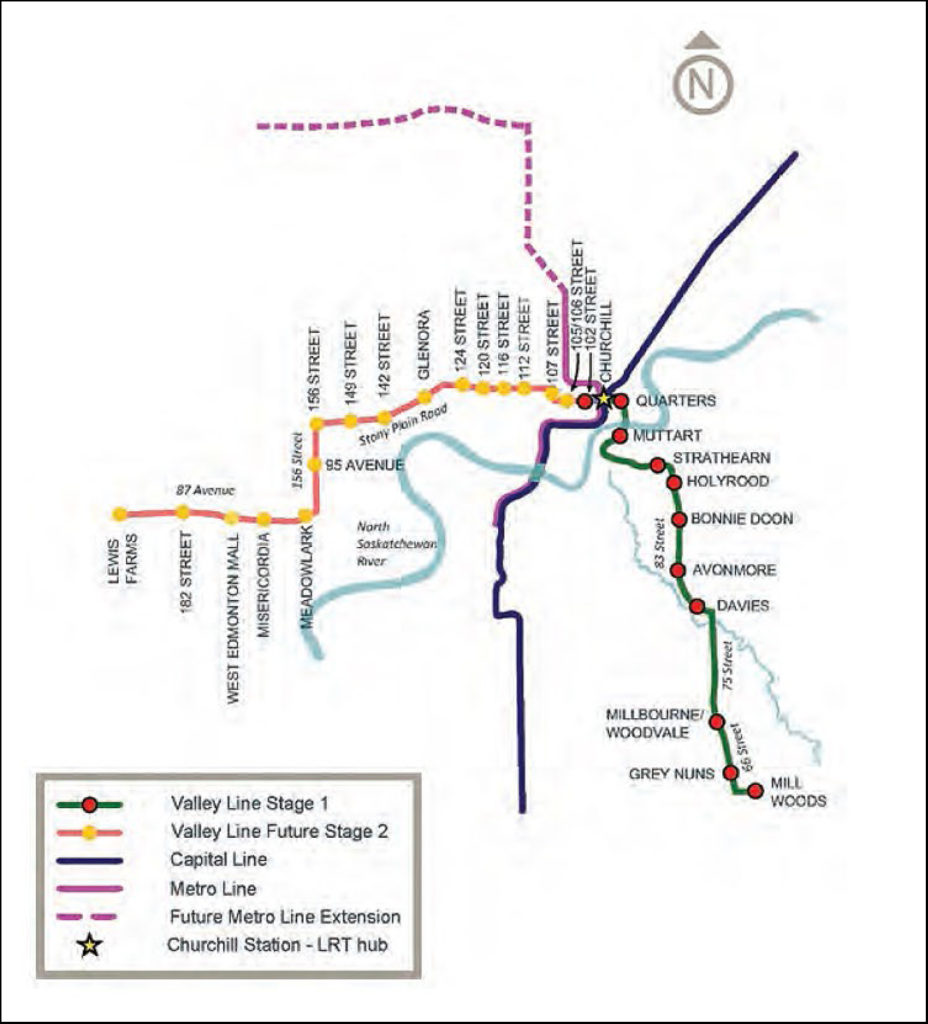
Meanwhile, several of the original DuWag LRVs from 1978 soldier on, and will do so for an additional five years, a tribute to a superb basic design and excellent Edmonton Transit Service maintenance.
With appreciation to Edmonton Transit Communications Advisor Jyllian Park and Michael Roschlau, formerly of the Canadian Urban Transit Association.
